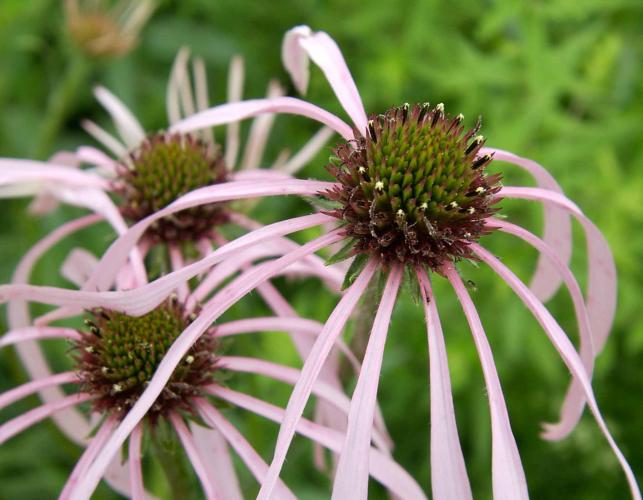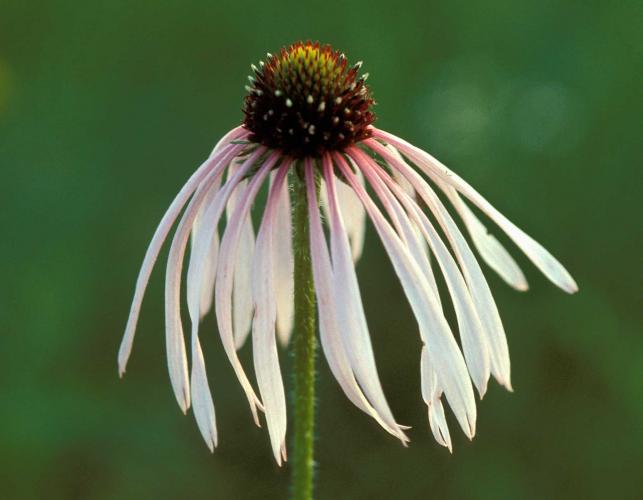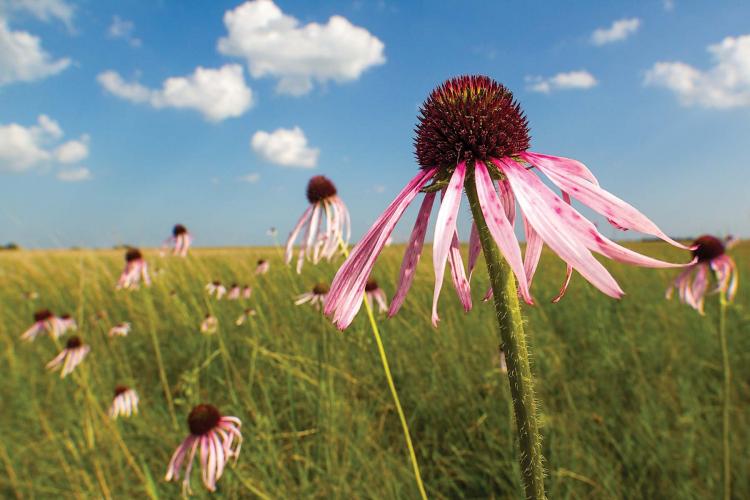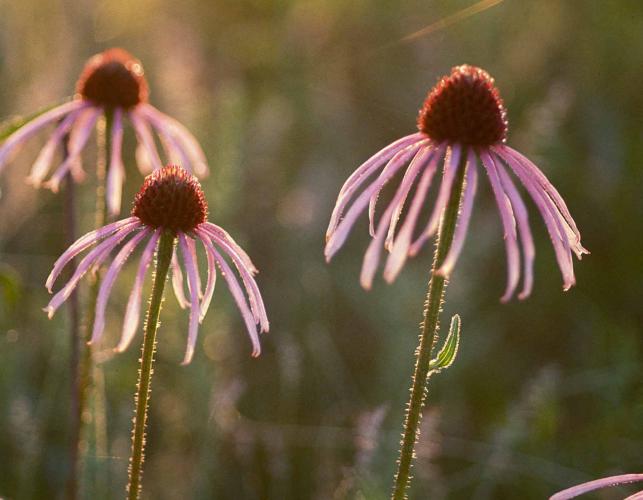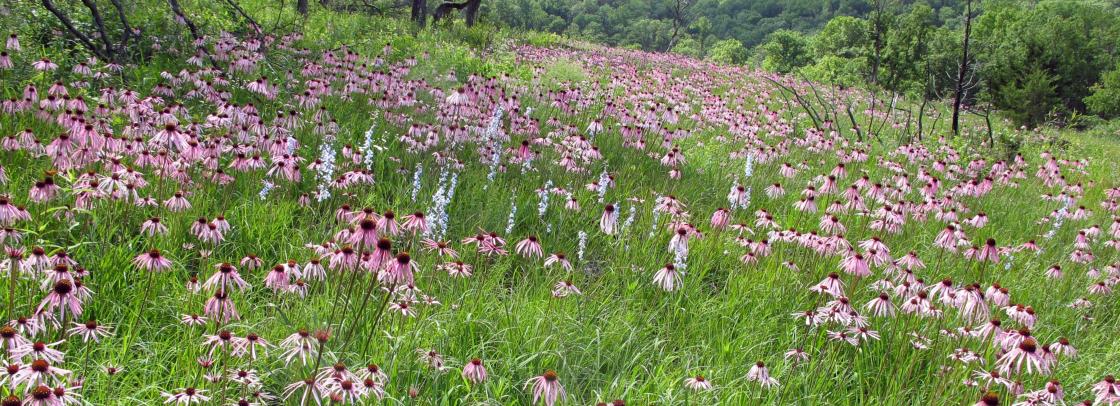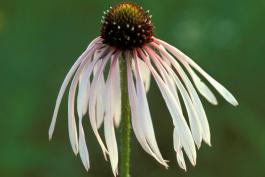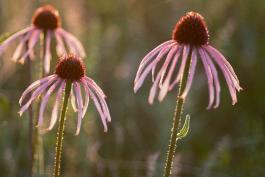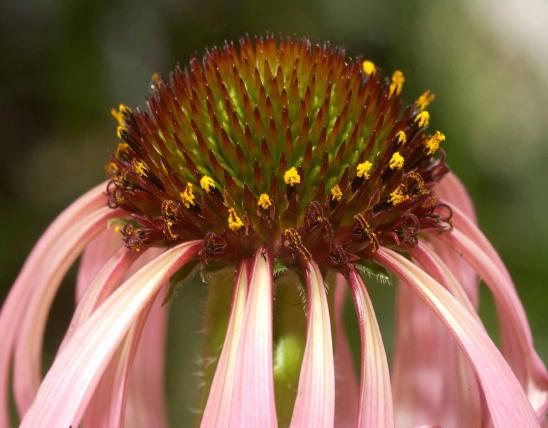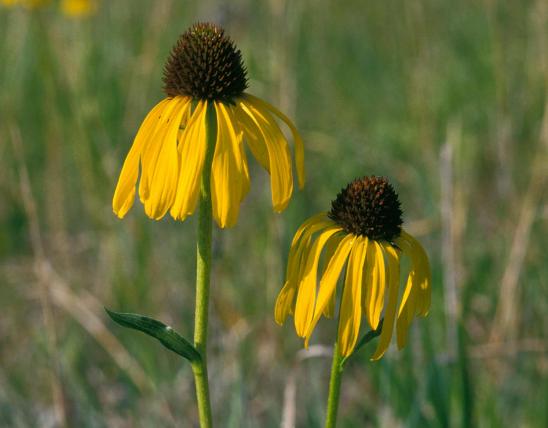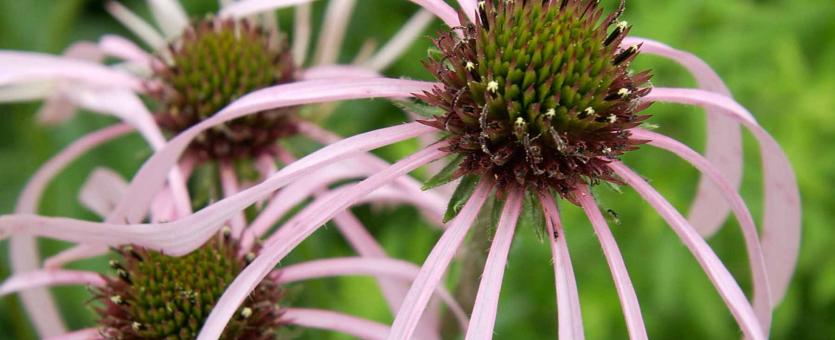
Pale purple coneflower is a showy perennial with a mostly unbranching stem arising from basal leaves, with a single, sunflower-like flower head. The disk is knoblike, brown, with white stamens protruding; the ray flowers are pale purple, rose, or magenta (rarely white), slender and drooping, to 3½ inches long, the ends notched. The pollen is white. Blooms May–July. The basal leaves are in a clump, are strap-shaped, and are up to 13 inches long including the long stalks; the stem leaves are shorter and narrow. The stems and leaves have stiff, spreading hairs. The fruits are in a burrlike, dome-shaped head that blackens upon drying.
Similar species: Glade coneflower (E. simulata) is most similar; it has yellow, not white pollen, and it occurs mainly in the eastern Ozarks.
Height: to 3 feet.

Scattered statewide, although apparently absent from the Mississippi Lowlands; in the eastern Ozarks, glade coneflower (Echinacea simulata) tends to predominate.
Habitat and Conservation
Occurs in prairies, glades, savannas, openings of dry upland forests, pastures, roadsides, and railroads. Along with other flowers in the genus Echinacea, this plant is often targeted by unscrupulous root collectors who sell them to manufacturers of herbal medicines. Such vandalism is one reason laws were enacted restricting the collecting of plants from Missouri's public highways.
Status
Native Missouri perennial wildflower. Popular in native landscaping.
Human Connections
Though scientists debate its efficacy, this and other echinaceas are used for medicinal purposes and are threatened by root diggers. Laws restricting collection have been enacted to protect wild populations. Coneflowers are easily grown in gardens and are available at native plant nurseries.
Ecosystem Connections
The seeds of coneflowers are eaten by goldfinches, whose late-summer breeding time corresponds with the abundant seed set of these and other sunflower-family flowers such as goldenrods, ironweed, and others.
The tough rootstocks of coneflowers prevent erosion.
The regal fritillary, arogos skipper, and Ottoe skipper are three native prairie butterflies that rely heavily on pale purple coneflower for nectar.
